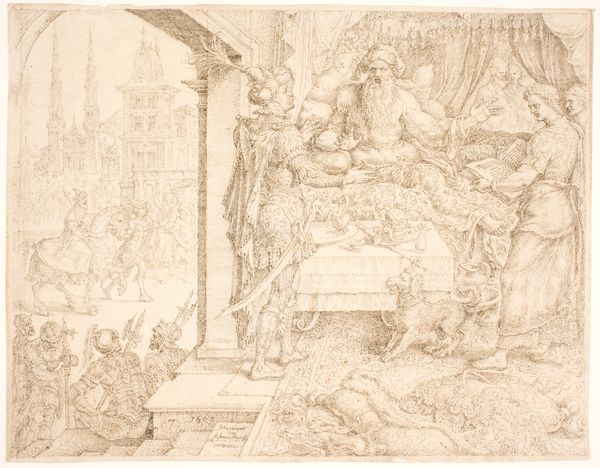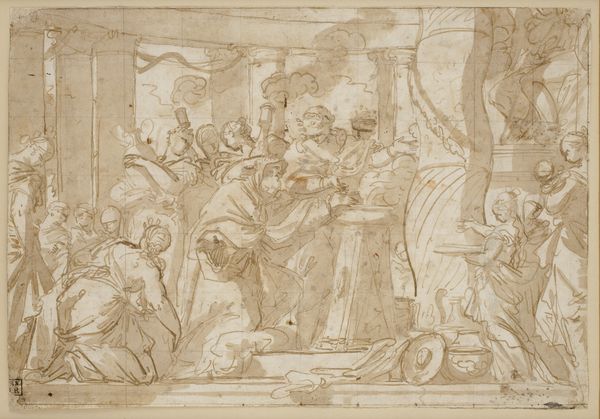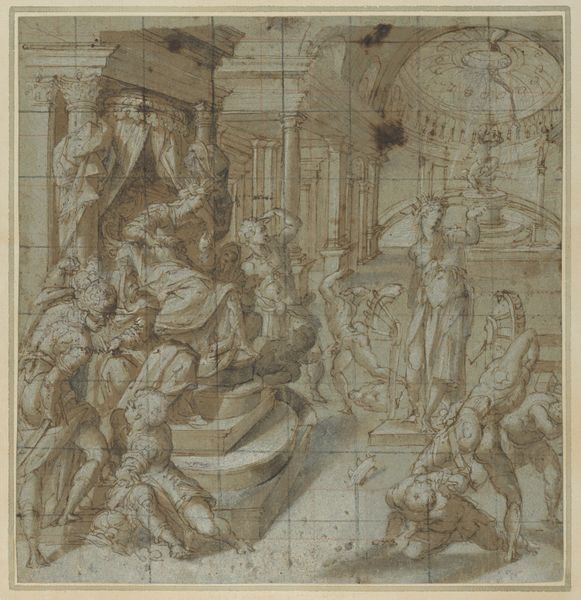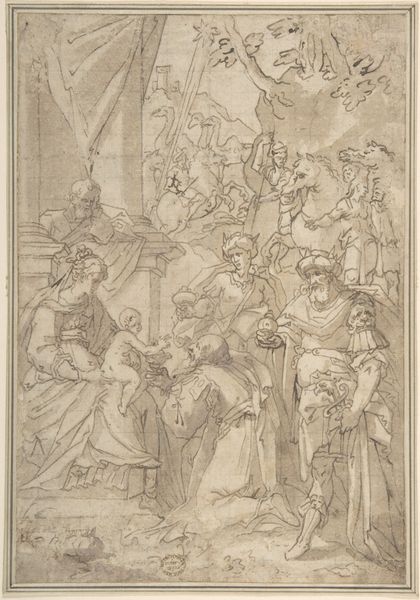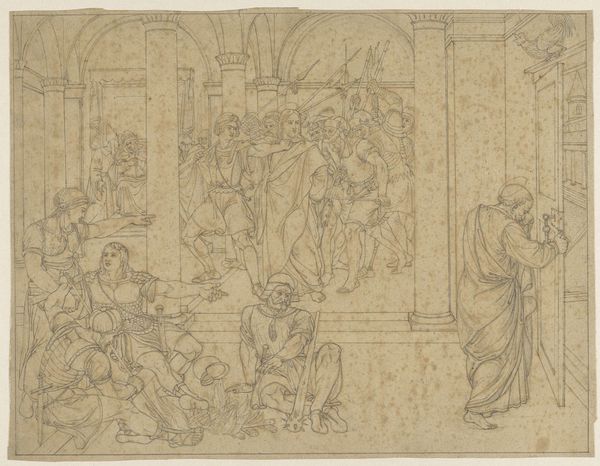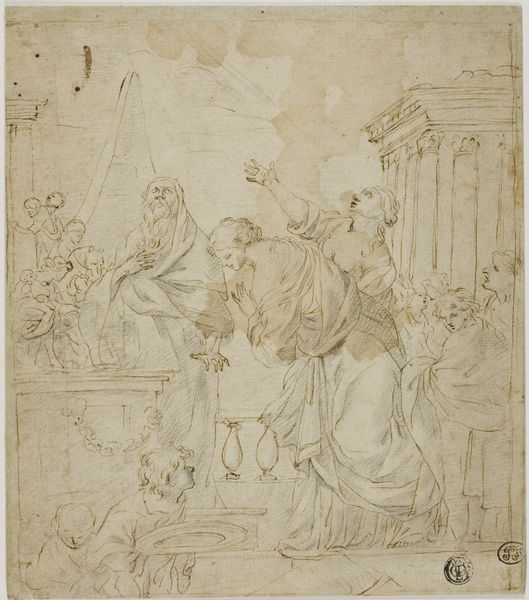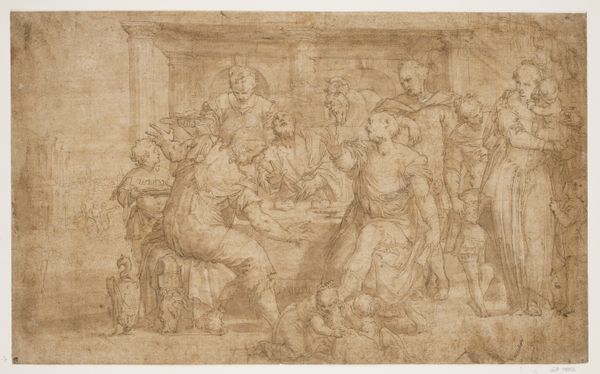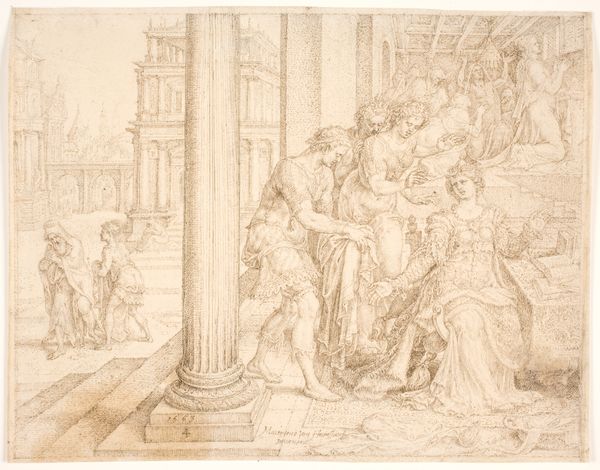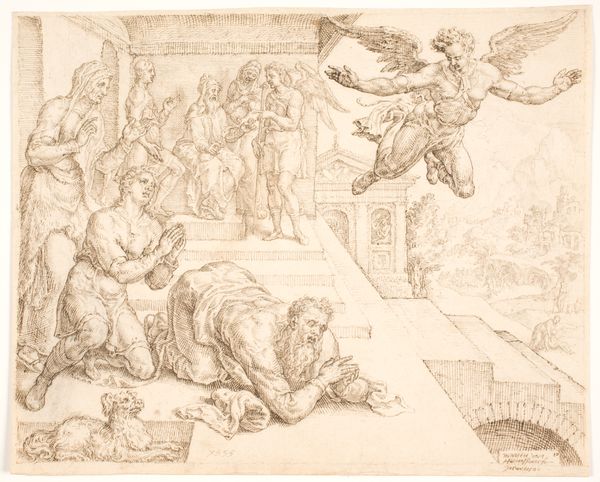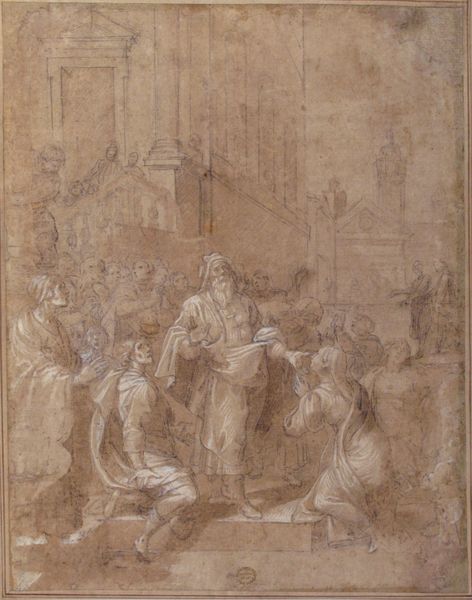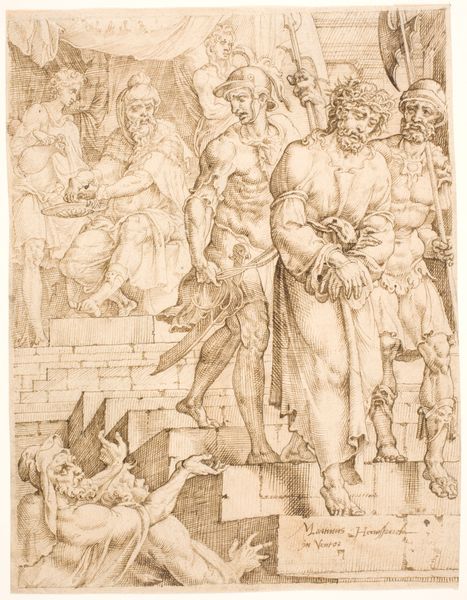
Christ and the Daughter of the Centurion 1500 - 1600
0:00
0:00
drawing, print, ink, pencil
#
portrait
#
drawing
# print
#
figuration
#
11_renaissance
#
ink
#
pencil
#
history-painting
#
italian-renaissance
#
christ
Dimensions: 7 3/8 x 7 7/8in. (18.7 x 20cm)
Copyright: Public Domain
Editor: This is "Christ and the Daughter of the Centurion," a drawing in ink and pencil from sometime in the 16th century, attributed to Perino del Vaga. It's striking how the artist captured so many figures with just delicate lines. What resonates most with you when you look at it? Curator: For me, it’s the Centurion himself. See how he’s positioned between Christ and his daughter? He's a powerful figure, but his stance also speaks of humility, almost supplication. He's the bridge between two worlds – Roman authority and divine grace. His raised hand towards Christ echoes the faith necessary for such a miraculous intervention. How do you interpret his posture? Editor: I see your point about the Centurion acting as a bridge. Maybe he represents the cultural shift happening at the time? The fading Roman empire and the rise of Christianity? Curator: Precisely. Consider the architectural elements. The classical Roman arches contrast with the more delicate canopy over the daughter's bed. These visual cues can imply a deeper commentary about the transition of power and belief systems during the Renaissance. Do you notice anything else that speaks to the time period? Editor: I'm struck by how contemporary the clothing feels, like Renaissance fashion placed within a biblical scene. It humanizes the story. Curator: Indeed, that visual anachronism was very common! It connects the viewer to the narrative, bridging the gap between the ancient story and their own present. What do you take away from how Perino del Vaga blends those symbols? Editor: I see how the drawing isn't just a biblical scene, but a cultural artifact reflecting the Renaissance's fascination with the past and the present. I'll definitely look closer at these kinds of details in other works. Curator: Me too. I feel this has given me a richer perspective on not only the Italian Renaissance, but also the symbolism of how faith interacts with secular life.
Comments
No comments
Be the first to comment and join the conversation on the ultimate creative platform.
